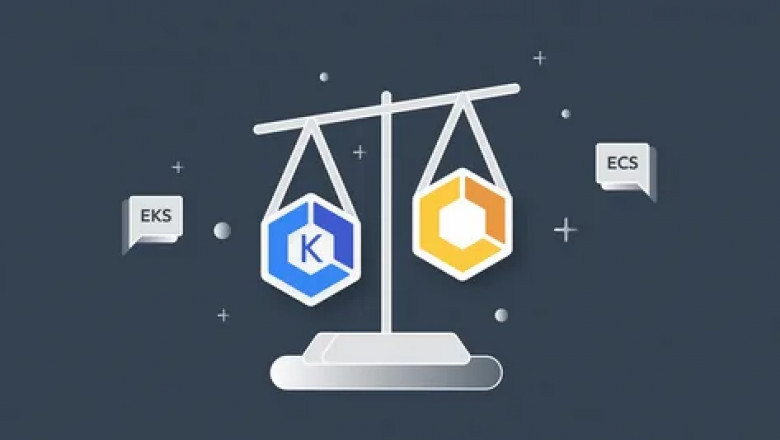views
In the fast-evolving cloud ecosystem, upgrading Kubernetes is essential to ensure security, performance, and access to the latest features. Whether you're running a self-managed Kubernetes cluster or using a managed service like Amazon Elastic Kubernetes Service (EKS), a well-planned upgrade process minimizes disruptions while improving efficiency. In this guide, we’ll cover the importance of a Kubernetes upgrade, the upgrade process, and best practices, particularly focusing on an EKS upgrade strategy.
Why Upgrade Kubernetes?
Upgrading Kubernetes is not just about getting new features—it’s about maintaining security, performance, and compliance. Here are key reasons to stay updated:
1. Security Enhancements
Each new version of Kubernetes comes with security patches that address vulnerabilities found in previous releases. Running outdated versions exposes your workloads to potential security threats.
2. Performance Improvements
New Kubernetes versions bring optimizations that enhance cluster efficiency, reduce resource consumption, and provide better scheduling capabilities.
3. Access to New Features
Upgrading ensures access to the latest features, including enhanced networking, improved API capabilities, and better workload management.
4. Compatibility & Support
Kubernetes has a regular release cycle, and older versions eventually lose official support. Keeping your cluster updated ensures continued compatibility with cloud services and third-party tools.
Kubernetes Upgrade Process
Upgrading Kubernetes is a multi-step process that requires careful planning. Below are the general steps for a successful Kubernetes upgrade:
Step 1: Review the Current Version & Release Notes
Before upgrading, identify your current Kubernetes version and review the release notes of the target version. This helps you understand changes, deprecations, and potential issues.
kubectl version
Step 2: Backup Your Cluster
A Kubernetes upgrade carries risks, so it's crucial to back up etcd (Kubernetes’ key-value store) and application configurations. Tools like Velero can help automate backups.
velero backup create cluster-backup --include-namespaces '*'
Step 3: Upgrade Kubernetes Control Plane
For self-managed clusters, upgrade the control plane components (API server, scheduler, and controller manager) before updating worker nodes.
For EKS, you can upgrade the control plane using AWS CLIaws eks update-cluster-version --name my-cluster --kubernetes-version 1.28
Step 4: Upgrade Worker Nodes
After upgrading the control plane, update worker nodes in a rolling manner to avoid downtime. If using managed node groups in EKS, AWS provides automated node group upgrades.
aws eks update-nodegroup-version --cluster-name my-cluster --nodegroup-name my-node-group
Step 5: Validate and Monitor
Once the upgrade is complete, verify the cluster’s health and monitor application performance:
kubectl get nodes
kubectl get pods -A
Use logging and monitoring tools like Prometheus, Grafana, or AWS CloudWatch to track cluster stability.
EKS Upgrade Best Practices
Since Amazon EKS is a managed Kubernetes service, upgrading it involves unique considerations. Here are some best practices:
1. Check AWS Support and Version Compatibility
AWS EKS supports three stable Kubernetes versions at a time. Before upgrading, confirm that your workloads and dependencies are compatible with the new version.
2. Upgrade Staging Before Production
Test the upgrade on a staging environment before applying changes to production. This helps detect any issues before they impact critical workloads.
3. Use Managed Node Groups
Amazon EKS provides Managed Node Groups, which simplify node upgrades. If you’re using self-managed nodes, ensure you update the AMI and bootstrap configurations.
4. Implement Zero-Downtime Deployments
Use strategies like rolling updates, blue-green deployments, or canary releases to minimize service interruptions during an upgrade.
5. Automate Upgrades
Use Infrastructure as Code (IaC) tools like Terraform, AWS CloudFormation, or Helm to automate and manage Kubernetes upgrades efficiently.
How Kapstan Helps with Kubernetes & EKS Upgrades
At Kapstan, we specialize in Kubernetes solutions, helping businesses maintain robust and scalable containerized environments. Whether you need assistance with planning an EKS upgrade, automating cluster upgrades, or ensuring security best practices, Kapstan’s cloud experts can streamline the process for you. Our Kubernetes services ensure minimal downtime, optimal resource utilization, and enhanced security for your cloud workloads.
Conclusion
A Kubernetes upgrade is a critical task that should be performed regularly to maintain a secure and high-performing cluster. For those using Amazon EKS, the EKS upgrade process requires careful planning to ensure a smooth transition with minimal disruptions. By following best practices and leveraging expert services like Kapstan, businesses can keep their cloud infrastructure up to date while ensuring seamless application performance.














Comments
0 comment